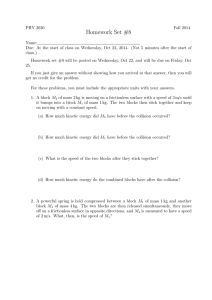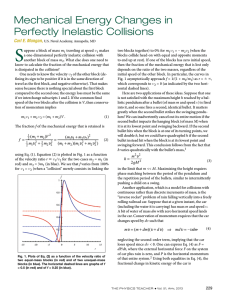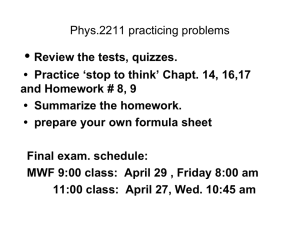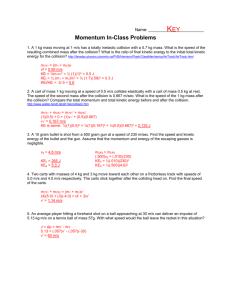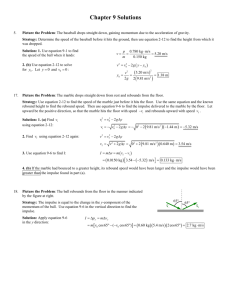Recitation ch8
advertisement
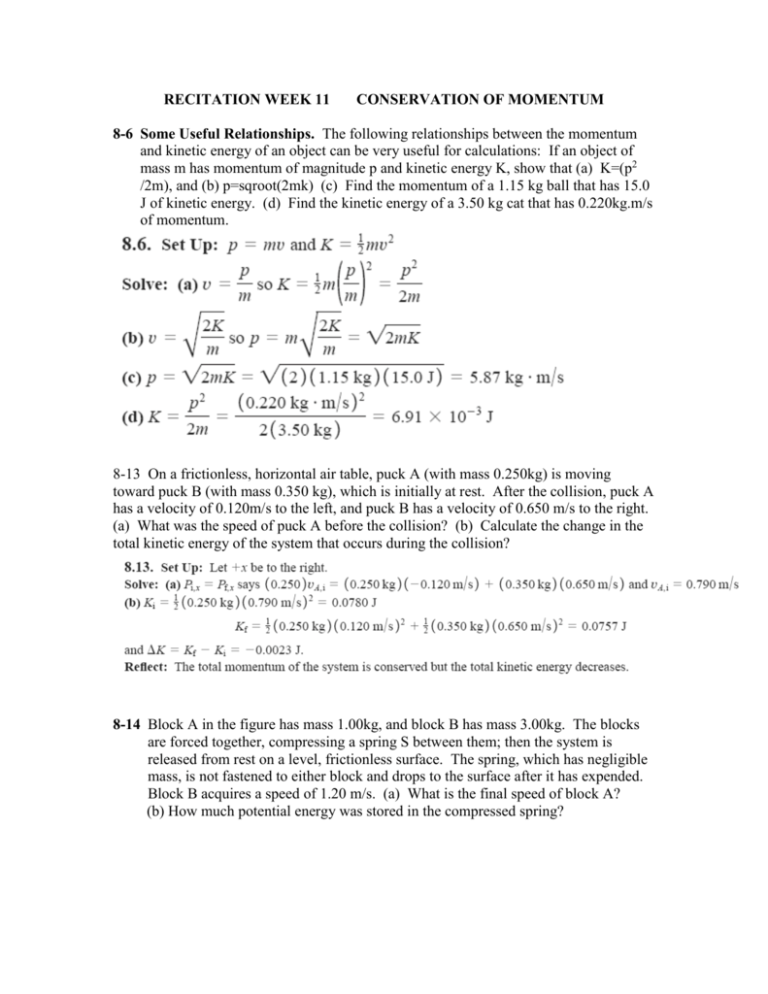
RECITATION WEEK 11 CONSERVATION OF MOMENTUM 8-6 Some Useful Relationships. The following relationships between the momentum and kinetic energy of an object can be very useful for calculations: If an object of mass m has momentum of magnitude p and kinetic energy K, show that (a) K=(p2 /2m), and (b) p=sqroot(2mk) (c) Find the momentum of a 1.15 kg ball that has 15.0 J of kinetic energy. (d) Find the kinetic energy of a 3.50 kg cat that has 0.220kg.m/s of momentum. 8-13 On a frictionless, horizontal air table, puck A (with mass 0.250kg) is moving toward puck B (with mass 0.350 kg), which is initially at rest. After the collision, puck A has a velocity of 0.120m/s to the left, and puck B has a velocity of 0.650 m/s to the right. (a) What was the speed of puck A before the collision? (b) Calculate the change in the total kinetic energy of the system that occurs during the collision? 8-14 Block A in the figure has mass 1.00kg, and block B has mass 3.00kg. The blocks are forced together, compressing a spring S between them; then the system is released from rest on a level, frictionless surface. The spring, which has negligible mass, is not fastened to either block and drops to the surface after it has expended. Block B acquires a speed of 1.20 m/s. (a) What is the final speed of block A? (b) How much potential energy was stored in the compressed spring? 8-19 Combining Conservation Laws. A 5.00kg chunk of ice is sliding at 12.0m/s on the floor of an ice-covered valley when it collides with and sticks to another 5.00 kg chunk of ice that is initially at rest. ( see figure). Since the valley is icy, there is no friction. After the collision, how high above the valley floor will the combined chunks go? (Hint: Break this problem into two parts-the collision and the behavior after the collision-and apply the appropriate conservation law to each part.) 8-25 A 5.00g bullet is fired horizontally into a 1.20 kg wooden block resting on a horizontal surface. The coefficient of kinetic friction between the block and the surface is 0.20. The bullet remains embedded in the block, which is observed to slide 0.230 m along the surface before stopping. What was the initial speed of the bullet? 8-33. Nuclear Collisions. Collisions between atomic and subatomic particles are often perfectly elastic. In one such collision, a proton traveling to the right at 258 km/s collides head-on and elastically with a stationary alpha particle ( a helium nucleus, having mass 6.65 x 10-27 kg). Consult Appendix F as needed. (a) Find the magnitude and direction of the velocity of each particle after the collision. (b) How much kinetic energy does the proton lose during the collision? (c) How can the collision be elastic if the proton loses kinetic energy?
